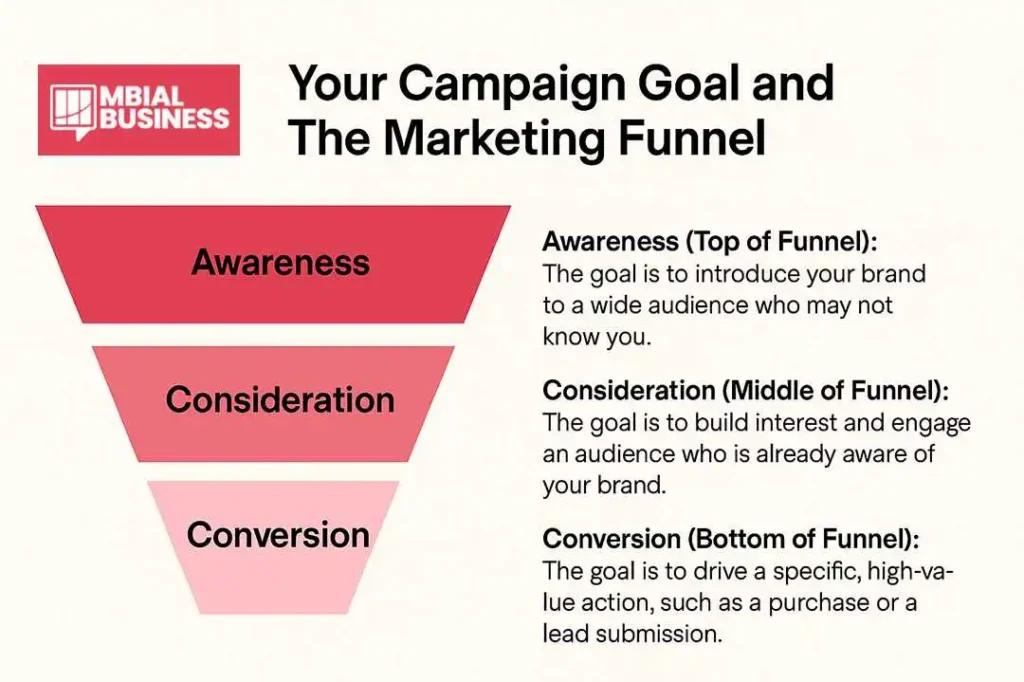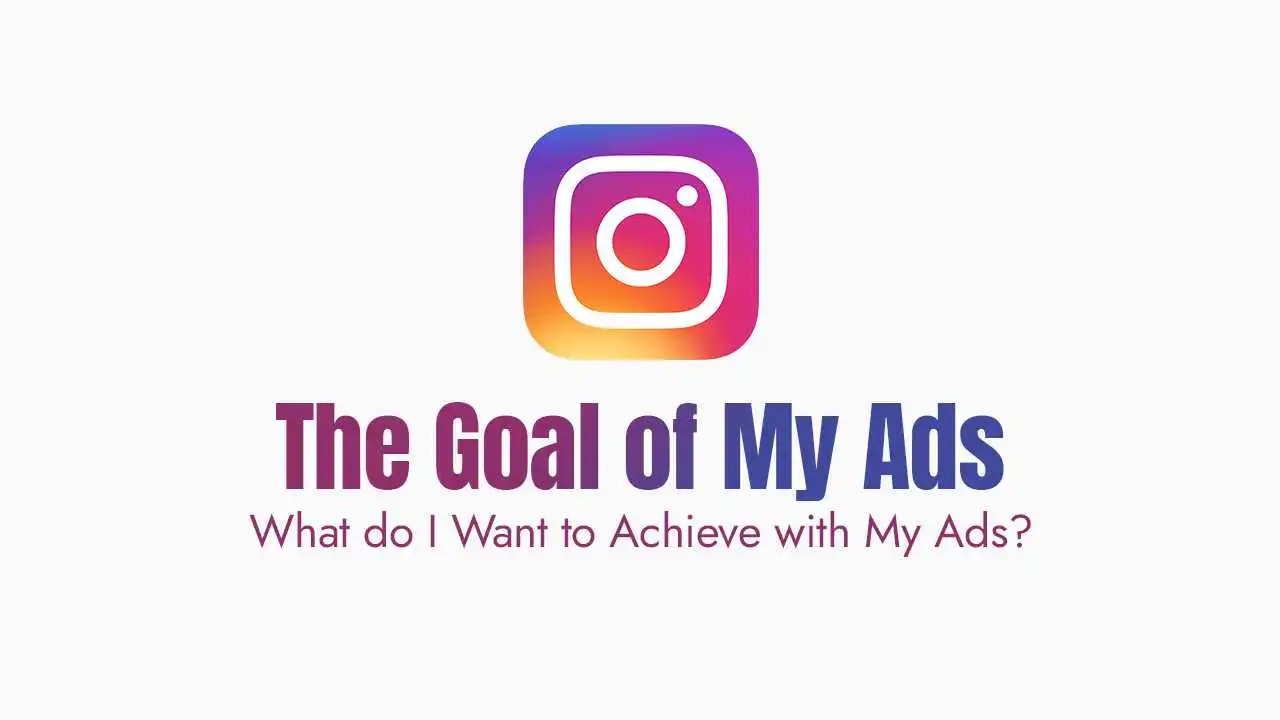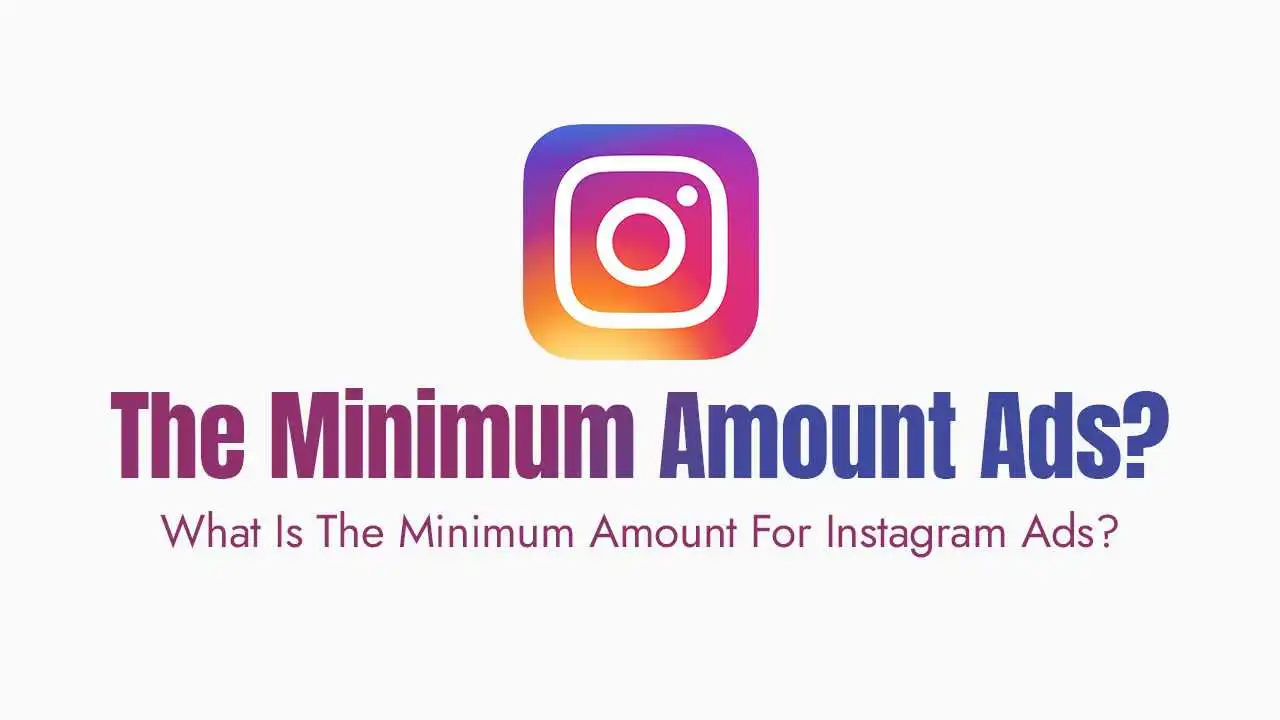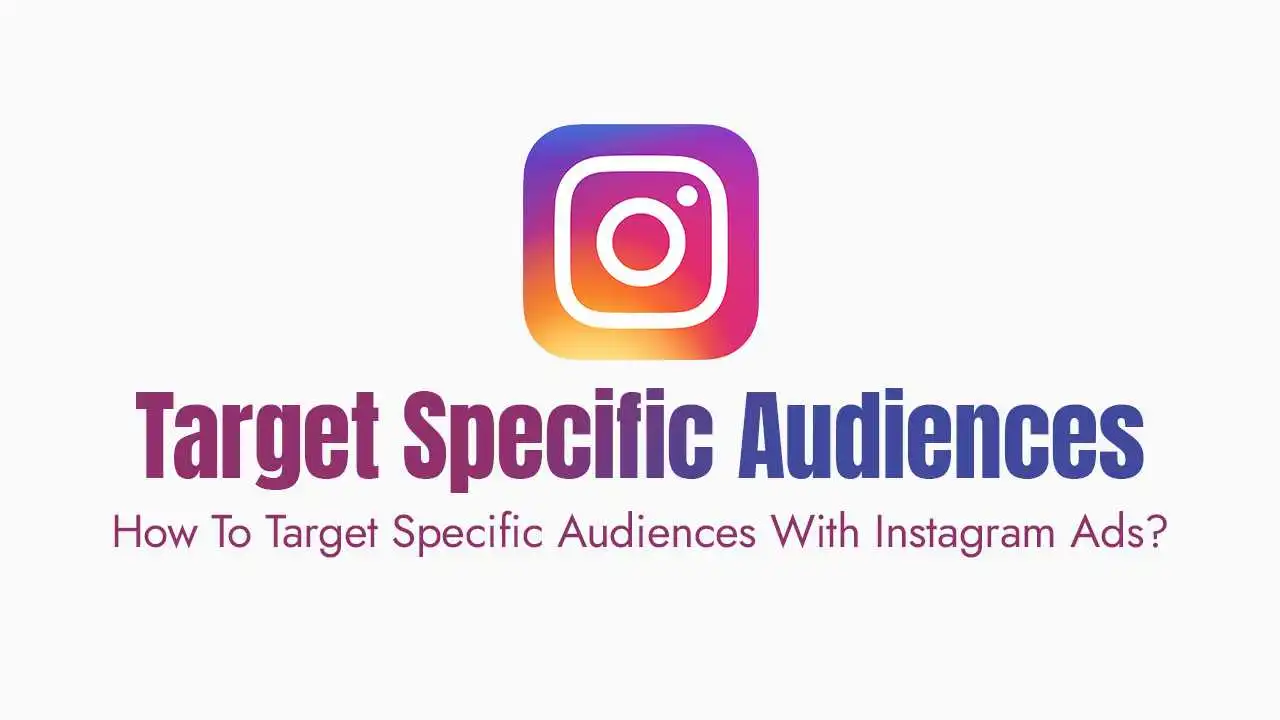Before you spend a single dollar on an ad campaign, you need to answer a critical question: “What is the goal?” This might seem obvious, but many businesses make the mistake of running ads without a clear objective. The result is often wasted spend and a campaign that looks good on the surface but fails to deliver a tangible return.
The most effective ad campaigns are not about clicks or likes—they are about achieving a specific, measurable business outcome. Your objective will be the foundation for everything else, from your ad creative and your target audience to your budget and your key metrics.
Campaign Goal and The Marketing Funnel:
Think of your ad goals in the context of the marketing funnel. A customer’s journey from stranger to loyal advocate can be broken down into three main stages: Awareness, Consideration, and Conversion. Your ad objective should align with where you want to reach people in that journey.
Awareness (Top of Funnel):
The goal is to introduce your brand to a wide audience who may not know you.
Consideration (Middle of Funnel):
The goal is to build interest and engage an audience who is already aware of your brand.
Conversion (Bottom of Funnel):
The goal is to drive a specific, high-value action, such as a purchase or a lead submission.

The Core Ad Objectives Explained:
Within the Meta Ads Manager, all of your ad campaigns will fall under one of a few core objectives. Here’s a breakdown of the most common ones and what they’re designed to achieve.
1. Awareness:
Goal:
To maximize the number of people who see your ad. This objective is not about driving a specific action but about getting your brand in front of a new audience. It’s a fundamental goal for new businesses, product launches, or a rebrand.
When to Use It:
When you want to increase brand recognition and recall. Think of it as a digital billboard—you want as many eyes on your brand as possible.
Key Metrics:
Impressions, Reach (the number of people who saw your ad), Ad Recall Lift (how many people remember seeing your ad).
2. Traffic
Goal:
To send people from your ad to a specific destination, such as your website, a landing page, or a blog post.
When to Use It:
When your primary objective is to get clicks to an external page. This is a good choice for content creators, bloggers, or businesses that want to fill the top of their marketing funnel with new visitors.
Key Metrics:
Link Clicks, Landing Page Views, Cost Per Click (CPC).
3. Engagement
Goal:
To increase interactions with your post. The algorithm will show your ad to people who are most likely to like, comment, share, or watch a video.
When to Use It:
When you want to build social proof and community around your content. It’s an excellent way to boost a post with great organic performance or to create a “warm” audience that you can later retarget with a Conversion campaign.
Key Metrics:
Post Engagement, Comments, Shares, Video Views.

4. Leads:
Goal:
To collect information from potential customers who are interested in your product or service. This is a powerful objective for businesses that have a high-ticket item or a long sales cycle.
When to Use It:
When you want to generate sign-ups for a newsletter, free trial, or a consultation. It often uses a dedicated “Lead Form” on Instagram to make it easy for users to submit their information.
Key Metrics:
Leads, Cost Per Lead (CPL).
5. Sales (Conversions):
Goal:
To drive a specific, high-value action, such as a purchase, a booking, or a download. This is typically the most direct path to revenue.
When to Use It:
When your business is ready to convert warm audiences into paying customers. It is most effective when you are retargeting people who have already shown interest in your brand. The algorithm finds users who are most likely to convert, which is why it often requires a well-optimized website.
Key Metrics:
Purchases, Return on Ad Spend (ROAS), Cost Per Acquisition (CPA), Conversion Rate.

Aligning Creative with Your Objective:
Your ad creative should be designed to support your objective.
Awareness:
Focus on high-quality, visually stunning content that introduces your brand and its unique value proposition.
Traffic:
Your ad should have a clear, compelling call-to-action (CTA) that encourages the user to click the link, such as “Read More” or “Browse the Collection.”
Engagement:
Your ad should be thought-provoking or entertaining. Ask a question in your caption to encourage comments, or create a video that viewers want to share.
Sales:
The ad should be direct, with a sense of urgency or an irresistible offer. The CTA should be strong and unmistakable, like “Shop Now” or “Get 20% Off.”
The Bottom Line:
The question “what do I want to achieve with my ads?” is the most important one you’ll ever ask. By setting a clear goal and choosing the right campaign objective, you’re giving the ad platform a clear directive, and you’re building a foundation for a truly successful and profitable ad campaign.





